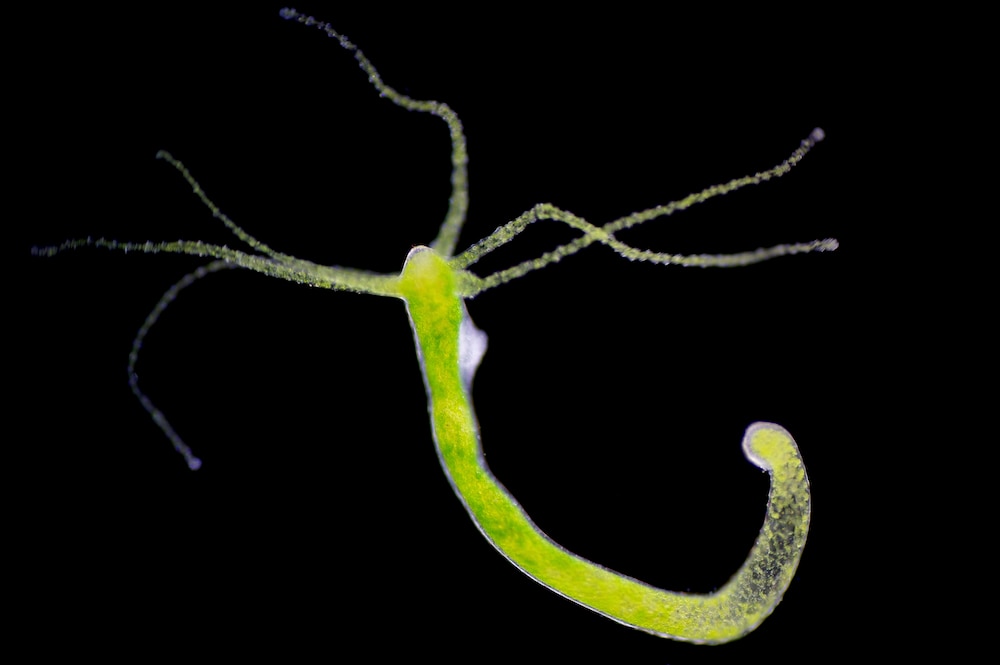Create a free profile to get unlimited access to exclusive videos, sweepstakes, and more!
Hydras are the micro-monsters that won’t die because they regrow their heads
Hydras have managed to achieve immortality by endlessly regenerating their cells, body parts, and even heads.

Immortality is impossible unless you’re living in a vampire movie or happen to be a Lord of the Rings elf, right? It is, at least for humans.
Hydras manage to escape the biological inevitability of death. These creatures are like tiny versions of the mythological Hydra that had multiple heads, and for every one that was sliced off by the sword of a trembling hero, two would regenerate. They actually beat out the beast that even Hercules had trouble with because they can keep renewing their cells indefinitely. Meaning, it isn’t just a hydra’s head that will reappear if an encounter with a predator goes wrong. These things can grow everything back.
How do they do it? The secret to this eternal life was what a team of researchers from UC Irvine were dying to know. Hydras, which are cnidarians related to jellyfish, corals, and sea anemones, can even spawn an entirely new animal from a severed body part. Unlike the Hydra of ancient lore, they only have one head — though it is surrounded by writhing tentacles. What genetic analysis has never before revealed until now is that they express different genes during regeneration than they do when they grow their first tentacled head.
“Hydra displays complex gene regulatory structures of developmentally dynamic enhancers, which suggests that the evolution of complex developmental enhancers predates the split of cnidarians and bilaterians,” the researchers said in a study recently published in Genome Biology and Evolution.
The exact mechanism behind head regeneration remains a mystery, but WNT is one pathway of head organizer genes involved. These lurk near the mouth and are also expressed there. If a hydra is decapitated, these genes zap signals to the head stump for certain tissues to form, so a new head can appear to come out of nowhere (at least in 48 hours). Head regeneration is not the result of magic, but of 27,000 genetic factors that showed 298 differences in how genes were expressed. Some have on and off switches that activate when a replacement head is needed.
As if creating maps of these genes and figuring out which subgroups they belonged to wasn’t enough, the research team realized that new heads form faster than the initial one. Hydras undergo budding to reproduce asexually. The difference between 72 hours for a first head to bud and only 48 to replace one made them suspect that something about the way the replacements were formed was different. They also found that there is an additional WNT gene involved when a hydra gets its first head. Hydra heads can be made three different ways.
For such a small organism, regeneration requires a monstrous amount of chromatin, or the material that makes up chromosomes, to be remade. Gene expression in head generation and regeneration was first compared to how genes were expressed in other parts of its body. The researchers then had to separate which genes were involved in initial head formation, which were only brought in for regeneration, and which had a function in both. The expression of some WNT genes was found to get a boost when the head of a hydra was regenerating.
Demystifying hydra genes could eventually mean breakthroughs for humans that may not mean immortality (yet) but at least regeneration of lost tissues or entire body parts. Previous studies of regenerative genes and methods have involved animals as diverse as starfish, sea urchins, lungfish, salamanders, and lizards. Just imagine a world in which procedures such as skin grafts or organ transplants are obsolete, all because some genetic mechanism in a human can be engineered to regrow what was lost. There could be a way to regenerate entire limbs someday.
Creatures like the hydra could revolutionize the future of medicine, and that is no myth.


























